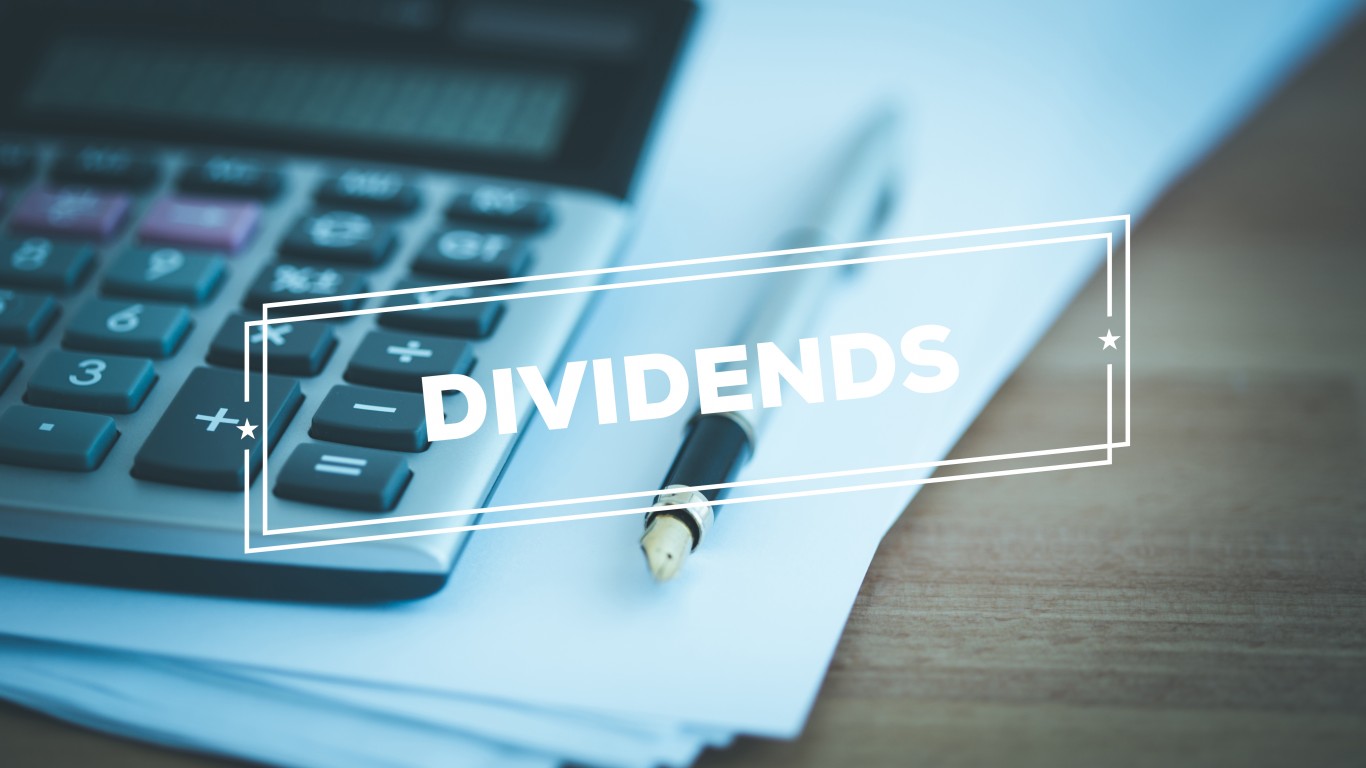Energy
After Apache and Occidental, 10 Oil and Gas Dividends at Greatest Risk

Published:
Last Updated:

Crude oil prices fell by more than 5% Thursday as worries over increased production from Russia and Saudi Arabia threaten to send prices plummeting further. The crude market is already oversupplied, and adding more barrels will depress the price even more. The demand destruction from the coronavirus is only adding to the story here.
First, the Russians and then the Saudis have chosen to fight for market share by absorbing the impact of a price war. Each apparently believes that its willingness to accept short-term pain in order to protect long-term interests is stronger than the other’s. Both hope to displace the United States as the swing supplier by driving costs so low that U.S. shale production cannot afford to keep pace.
Whether any of this works as planned, one thing is probably undeniable. U.S.-traded oil-related stocks are in for some serious punishment. Investors are most likely to feel this in returns that have been robust for a long time but are under serious pressure now.
Many oil and gas companies have suggested in recent months that their dividends or distributions were safe or that they wanted to maintain those payouts at the current rate. A problem today is that desire is one thing and the need to preserve capital is another thing entirely.
Another issue to consider is that whatever companies announced before travel was restricted due to the spreading coronavirus and before some nations were put on lockdown, added on top of the Saudi-Russia oil war, may no longer be material. To prove the point further, stocks were at all-time highs in mid-February and the stock market has painfully corrected more than 20% into a “bear market” in less than a month. Some of the oil companies likely will be able to keep making their dividend payments. Whether that position changes remains to be seen.
It’s worth noting that not just exploration and production (E&P) companies stand to be hammered by falling prices. Oilfield services companies and infrastructure (pipeline) companies also face uncertain short-term prospects.
Energy company dividends may be at unsustainable levels for even the largest publicly traded firms. Will they follow the lead of Occidental Petroleum Corp. (NYSE: OXY), which cut its quarterly dividend by 86% earlier this week and shaved about a third from its capital spending for the year? Apache also joined in on the dividend and capex cuts (see below).
Here are 10 energy companies currently paying a dividend yield of 5% or more that may be at the most risk of slashing their dividends in an effort to conserve cash as share prices fall and dividend yields rise only due to the arithmetic. One company already has cut its dividend by 90%, and others almost certainly will be forced to follow.
Integrated oil supermajor BP PLC (NYSE: BP) pays a dividend yield of 10.22%. The company’s share price has fallen by 42% year to date, and the 52-week range is now $21.44 to $45.38, with a one-year price target of $45.56. The low was posted Thursday morning.
Enterprise Products Partners L.P. (NYSE: EPD), a pipeline and infrastructure firm, pays a distribution yield of 9.57%. Its common units have lost nearly 50% so far this year, and the 52-week range is $13.88 to $30.87, with a price target of $33.24.
E&P company Apache Corp. (NYSE: APA) had paid a dividend yield of 9.27% until Thursday morning, when it slashed the quarterly payout by 90% from $0.25 to $0.025 per share. Shares have fallen by 72% so far in 2020. The stock’s 52-week range is $6.60 to $38.12, and the low was posted Thursday morning. The consensus price target on the shares is $28.71. Apache has the smallest market cap ($2.76 billion) of any company on this list.
Oilfield services provider Halliburton Co. (NYSE: HAL) pays a current dividend yield of 8.83%. The company’s stock is down 71% for the year to date and trades in a range of $6.66 to $32.30, with a price target of $24.95. The 52-week low was posted Thursday morning.
Integrated oil supermajor Royal Dutch Shell PLC (NYSE: RDS-A) pays a dividend yield of 8.60%. The stock’s 52-week range is $29.50 to $66.48, with the low posted Thursday morning. The consensus price target is $67.84, and the shares are down 48% for the year to date.
Another supermajor, Exxon Mobil Corp. (NYSE: XOM), pays a dividend yield of 8.02%. The stock has dropped 44% of its value in 2020 and trades in a range of $38.08 to $93.49. The low was set Thursday morning. The stock’s consensus price target is $65.50.
Oilfield services company Schlumberger N.V. (NYSE: SLB) pays a dividend yield of 7.20%. The stock’s 52-week range is $12.91 to $48.88, and the 12-month price target is $39.03. So far in 2020, the shares are down 60%.
Infrastructure and pipeline giant Kinder Morgan Inc. (NYSE: KMI) pays a dividend yield of 6.45%. To date in 2020, its shares have dropped about 34%, the least of any of the stocks on this list. The 52-week range here is $13.45 to $22.58, and the low was set Thursday morning. The consensus price target on the stock is $21.96.
Another supermajor, Chevron Corp. (NYSE: CVX) pays a dividend yield of 6.07%. The stock has lost 37% of its value since the beginning of the year. That may be due in part to the company’s assurance that it plans to return $80 billion to shareholders over the coming five years. The stock’s 52-week range is $74.61 to $127.34, and the consensus price target is $127.23. The low was posted Thursday.
E&P company Diamondback Energy Inc. (NASDAQ: FANG) pays a dividend yield of 5.05%. The stock’s 52-week range is $22.56 to $114.14, and the consensus 12-month price target is $112.63. Shares have dropped 73% since the beginning of the year.
Thank you for reading! Have some feedback for us?
Contact the 24/7 Wall St. editorial team.